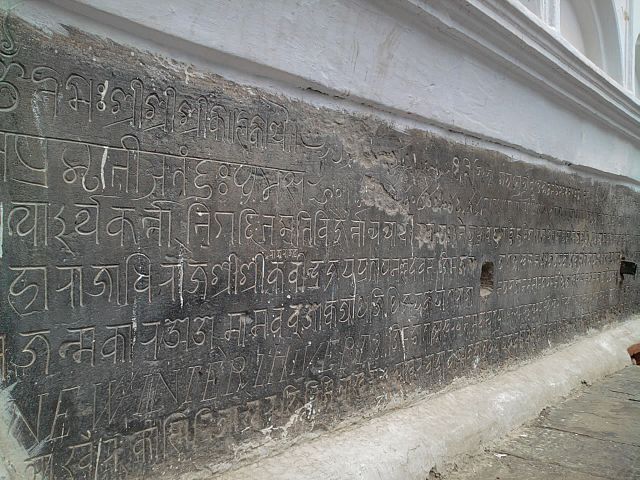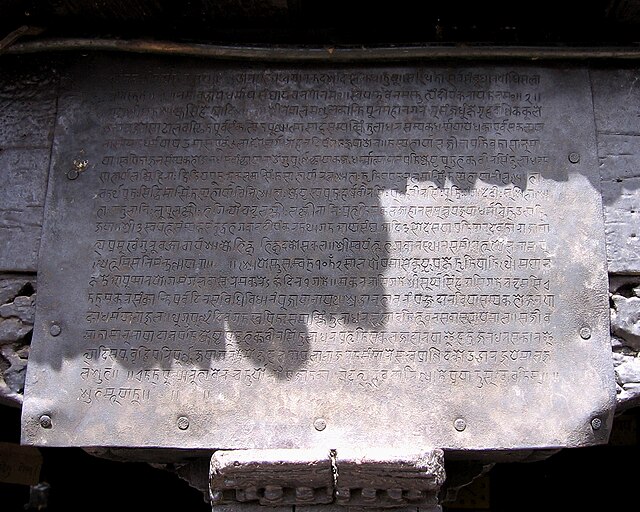Stone inscriptions in the Kathmandu Valley
Stone inscriptions in the Kathmandu Valley refer to ancient stone slabs, pillars and pedestals with text carved on them. They are the most important sources for the history of Nepal. A vast majority of the inscriptions found in Nepal are from the Kathmandu Valley where they are an ubiquitous element at heritage sites. They consist of royal edicts and dedicatory notes on Hindu and Buddhist temples, stupas, statues, water spouts and other architectural structures. Stone inscriptions are locally referred as Lōhan Pau.
Inscription in 15 languages dated 1654 AD at Kathmandu Durbar Square.
Epitaph in Latin and Nepal Bhasa dated 1745 on the tombstone of Father Della Penna who was buried in Patan.
Detail of stone inscription in Nepal Bhasa and Tibetan at Swayambhu.
Inscription at Swayambhu, Kathmandu.
Newar or Newari, known officially in Nepal as Nepal Bhasa, is a Sino-Tibetan language spoken by the Newar people, the indigenous inhabitants of Nepal Mandala, which consists of the Kathmandu Valley and surrounding regions in Nepal.
A line from an inscription dated 1706 using the term "Nepāla Bhāṣā" in Pracalit script to refer to the language.
A stone inscription in Classical Newar at Bhaktapur.
Copper plate inscription at Swayambhunath, dated Nepal Sambat 1072 (1952 AD)
ka kha yā mye ("a song of ka and kha"), a Newar language poem written by Briddhi Lakhmi, the queen consort of Bhaktapur.








